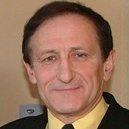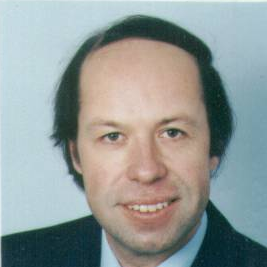Optimization Techniques, Algorithms, Applications for Cloud and Edge/Fog Computing Environments
A special issue of Algorithms (ISSN 1999-4893). This special issue belongs to the section "Combinatorial Optimization, Graph, and Network Algorithms".
Deadline for manuscript submissions: closed (15 March 2024) | Viewed by 8583
Special Issue Editors
Interests: discrete optimization; scheduling; complexity; graph theory; stability analysis; uncertainty
2. Ivannikov Institute for System Programming of the Russian Academy of Sciences, Alexander Solzhenitsyn st., 25. 109004 Moscow, Russia
3. Problem-Oriented Cloud Computing Environment International Laboratory, South Ural State University, Prospekt Lenina 76, 454080 Chelyabinsk, Russia
Interests: grid and cloud; multiobjective resource optimization; security; uncertainty; scheduling; heuristics and meta-heuristics; adaptive resource allocation; Internet of Things
Special Issues, Collections and Topics in MDPI journals
Interests: scheduling, in particular development of exact and approximate algorithms; stability investigations is discrete optimization; scheduling with interval processing times; complexity investigations for scheduling problems; train scheduling; graph theory; logistics; supply chains; packing; simulation and applications
Special Issues, Collections and Topics in MDPI journals
Special Issue Information
Dear Colleagues,
We invite you to submit your latest research in the area of the development of optimization algorithms and their applications to this Special Issue, “Optimization Techniques, Algorithms, and Applications for Cloud and Edge/Fog Computing Environments”. Edge–cloud–fog systems are very complex, and the use of different approaches in their design, development, and operational processes is inevitable. We are looking for new and innovative approaches for solving optimization problems arising in cloud, edge, and fog computing. High-quality papers are solicited to address both theoretical and practical issues of optimization algorithms. Submissions are welcome both for traditional optimization techniques and new applications for cloud, edge, and fog computing. Potential topics include but are not limited to single-criterion and multicriteria optimization problems, as well as problems arising in emerging applications, such as healthcare, smart manufacturing, smart agriculture, logistic, transport, web services, energy management, and smart home and city.
Prof. Dr. Yuri N. Sotskov
Prof. Dr. Andrei Tchernykh
Prof. Dr. Frank Werner
Guest Editors
Manuscript Submission Information
Manuscripts should be submitted online at www.mdpi.com by registering and logging in to this website. Once you are registered, click here to go to the submission form. Manuscripts can be submitted until the deadline. All submissions that pass pre-check are peer-reviewed. Accepted papers will be published continuously in the journal (as soon as accepted) and will be listed together on the special issue website. Research articles, review articles as well as short communications are invited. For planned papers, a title and short abstract (about 100 words) can be sent to the Editorial Office for announcement on this website.
Submitted manuscripts should not have been published previously, nor be under consideration for publication elsewhere (except conference proceedings papers). All manuscripts are thoroughly refereed through a single-blind peer-review process. A guide for authors and other relevant information for submission of manuscripts is available on the Instructions for Authors page. Algorithms is an international peer-reviewed open access monthly journal published by MDPI.
Please visit the Instructions for Authors page before submitting a manuscript. The Article Processing Charge (APC) for publication in this open access journal is 1600 CHF (Swiss Francs). Submitted papers should be well formatted and use good English. Authors may use MDPI's English editing service prior to publication or during author revisions.
Keywords
- edge, fog, and cloud computing
- internet of things
- distributed and grid technology
- virtualization
- cloud task scheduling
- metaheuristic techniques
- scheduling under uncertainty
- real-time scheduling
- workflow scheduling
- machine learning
- load balancing
- resource optimization
- cost optimization
- data reliability and security optimization
- simulation
- artificial intelligence
- big data workflows
- optimization on graphs
- project management
- stochastic models
- optimization in logistics
- smart energy management
- smart home and city
- design and optimization of intelligent transportation







